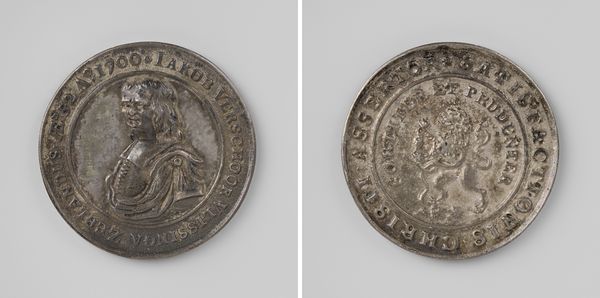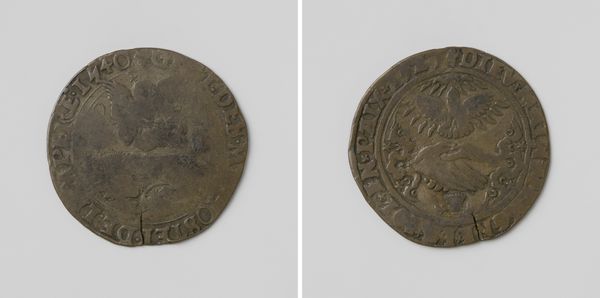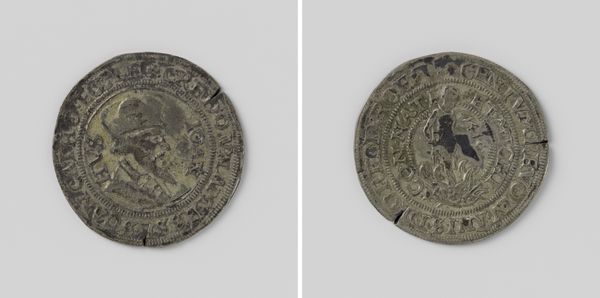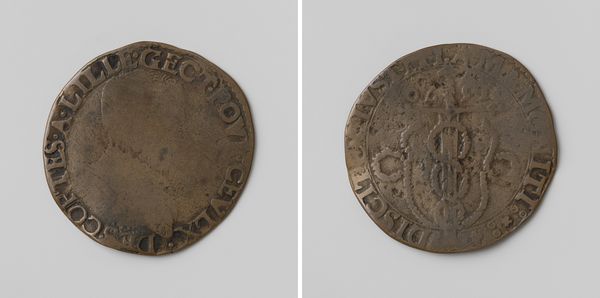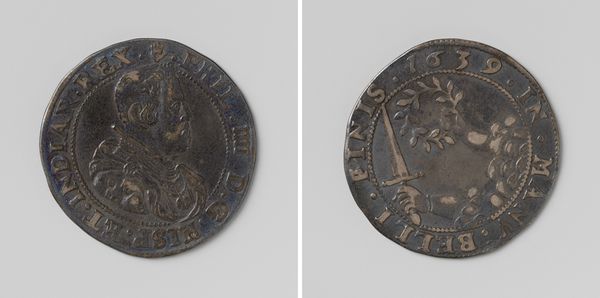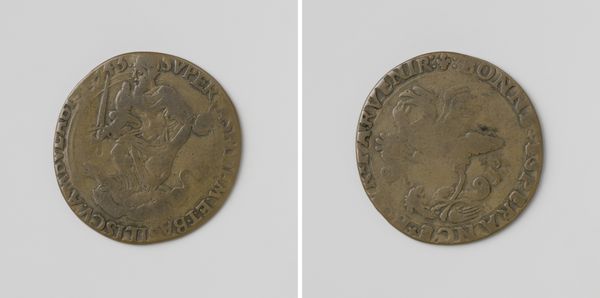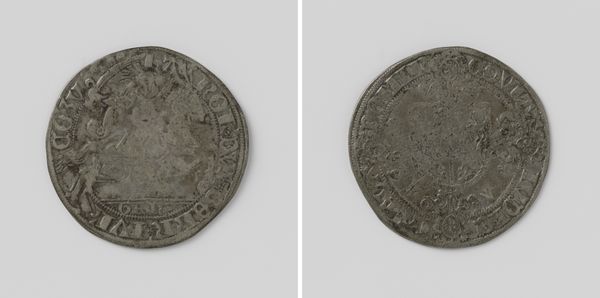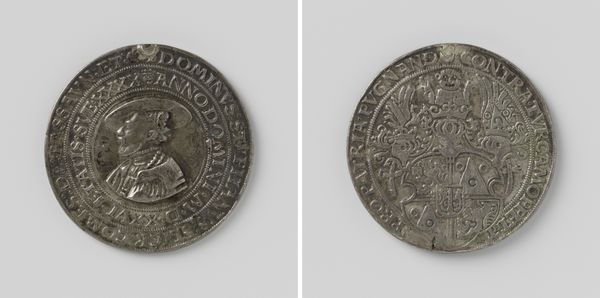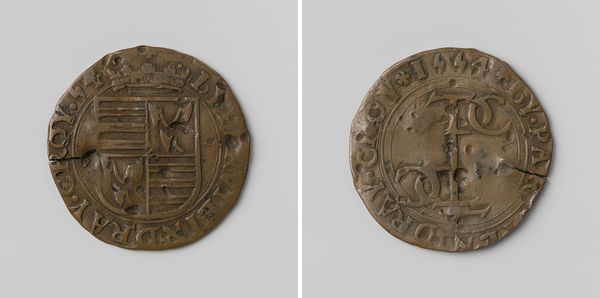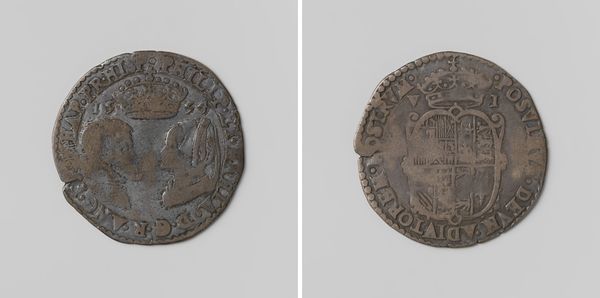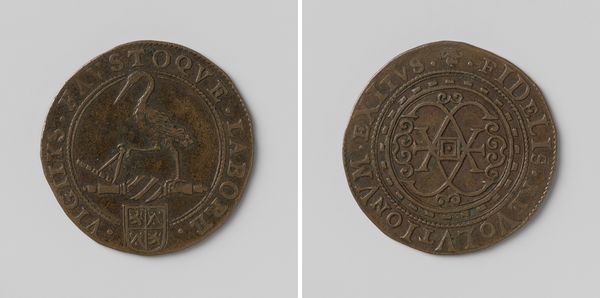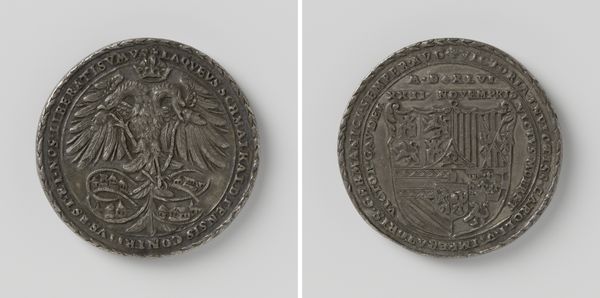
Neerslaan van de opstand te Gent, rekenpenning van de hofmeester van het bureau van de keizer 1540
0:00
0:00
carving, print, metal, relief, sculpture
#
carving
# print
#
metal
#
sculpture
#
relief
#
11_renaissance
#
sculpture
#
carved
Dimensions: diameter 2.7 cm, weight 3.31 gr
Copyright: Rijks Museum: Open Domain
Curator: Here we have a striking piece, "Neerslaan van de opstand te Gent, rekenpenning van de hofmeester van het bureau van de keizer," dating back to 1540. It's a medal, currently held at the Rijksmuseum. Editor: My initial reaction is one of somber observation. The metal appears worn, the relief nearly flattened, lending a feeling of history etched in materiality. The composition appears deliberate, weighty. Curator: Indeed. These types of medals served specific functions within the political economy. They weren't simply decorative. This one specifically commemorates the quelling of the revolt in Ghent. One side features an image of Charles V. Editor: Let’s consider the material itself. The patina and wear suggest extensive handling or circulation. The medium being metal itself provides permanence to its purpose, contrasting the volatile nature of suppressing rebellion. I wonder about the skill needed to achieve such detail in metalworking? Curator: It speaks volumes, doesn't it? The artistry required would have been significant. Also think about its role in solidifying the Emperor's power and legitimizing his actions after quelling rebellion in Ghent. It's interesting that something produced on this scale circulated widely. The inscriptions in Latin underscore that these images communicated power at several different levels of society. Editor: That’s insightful. The deliberate composition further enhances this communication. The circular format focuses the gaze, directing our eye to specific imagery. Do we know about the working conditions and status of the people who created this medal? Their labour undoubtedly played a vital role in creating this artifact, imbued with its power. Curator: Unfortunately, the records on those who actually crafted this medal are silent. But your point is well taken. Mass production like this meant a new scale of artistry in society and new avenues to participate in court culture. The use of Latin, the precise and neat form of each letter, are also significant in creating such pieces. Editor: Precisely, and in a way that’s incredibly compelling! These tangible echoes of conflict provide invaluable insight into how material and power intersect within a historical context. Curator: It truly offers a fascinating insight into the ways rulers sought to shape perception through artistry and production. Editor: Absolutely! Every detail on this seemingly small piece tells a monumental story of its own.
Comments
No comments
Be the first to comment and join the conversation on the ultimate creative platform.

